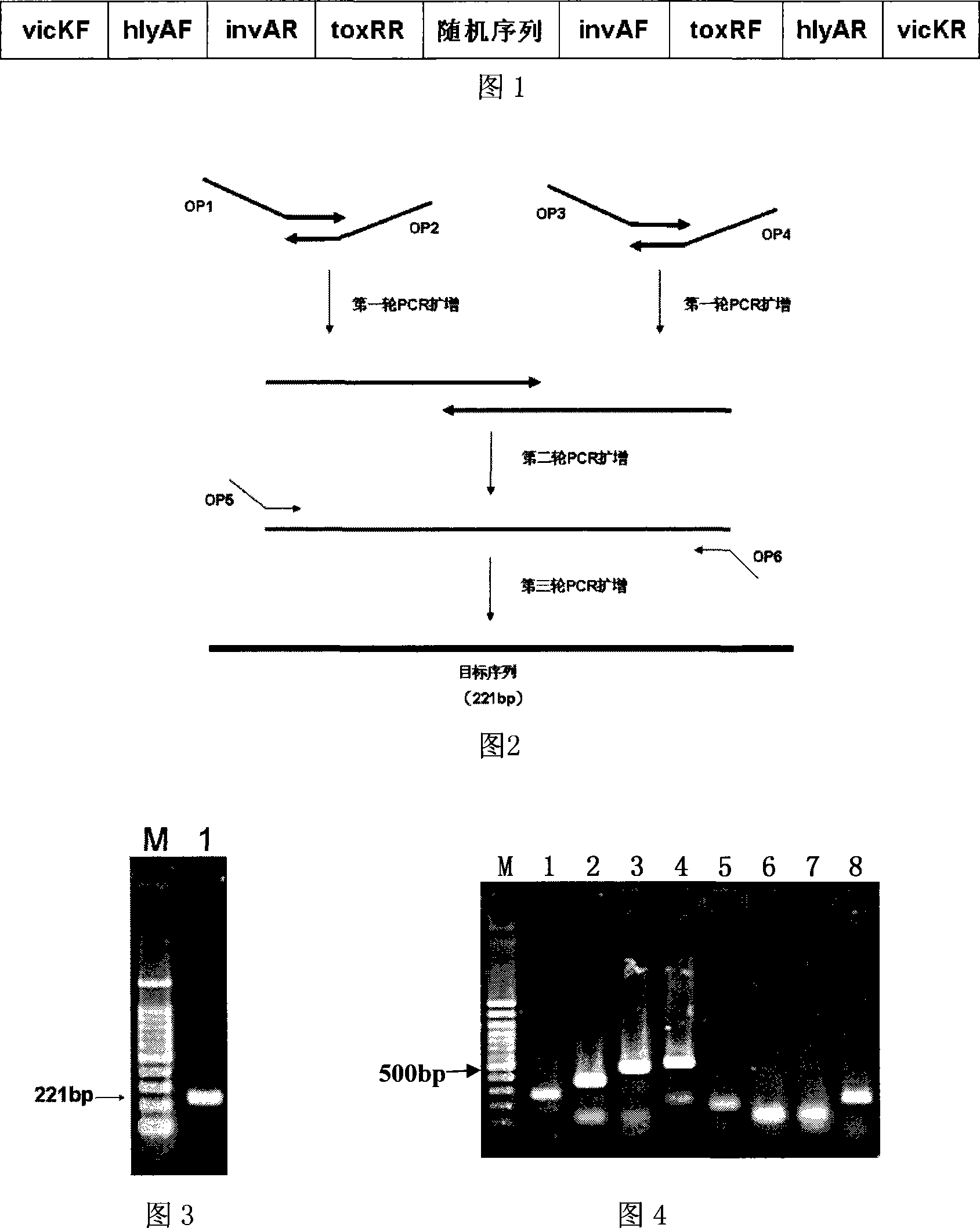Method for manufacturing multiple amplification internal mark for four-bacteria PCR test
A technology of multiple amplification and amplification of internal standards, applied in biochemical equipment and methods, DNA preparation, recombinant DNA technology, etc., can solve problems such as unavailability, and achieve the effect of improving accuracy
- Summary
- Abstract
- Description
- Claims
- Application Information
AI Technical Summary
Problems solved by technology
Method used
Image
Examples
Embodiment
[0030] 1. Design of specific detection primers
[0031] The known specific genes of Staphylococcus aureus, Salmonella, Listeria monocytogenes and Vibrio parahaemolyticus were analyzed by bioinformatics, and the target genes vicK, invA, hlyA and toxR were selected for detection. The sequences of vicK, invA, hlyA, and toxR genes were respectively compared with other microorganisms through the public BLAST software in Genbank (an existing technology, shared free of charge), and sequence segments with higher specificity were selected. Then use the software Primer 5.0 (commercially available, Premier, Canada) to design a pair of internal standard primers in this specific sequence. The primer sequences are as follows:
[0032] 1. Primers for detection of Staphylococcus aureus (vicKF / vicKR)
[0033] vicKF: 5'- CGCAGGCTAATACTGAAAG -3'
[0034] vic KR: 5'- TTCTGTTTCTTCACGGGTA -3'
[0035] (a) Detect the sequence characteristics of the target gene:
[0036] * Length: 512 bp
[...
PUM
 Login to View More
Login to View More Abstract
Description
Claims
Application Information
 Login to View More
Login to View More - R&D
- Intellectual Property
- Life Sciences
- Materials
- Tech Scout
- Unparalleled Data Quality
- Higher Quality Content
- 60% Fewer Hallucinations
Browse by: Latest US Patents, China's latest patents, Technical Efficacy Thesaurus, Application Domain, Technology Topic, Popular Technical Reports.
© 2025 PatSnap. All rights reserved.Legal|Privacy policy|Modern Slavery Act Transparency Statement|Sitemap|About US| Contact US: help@patsnap.com

